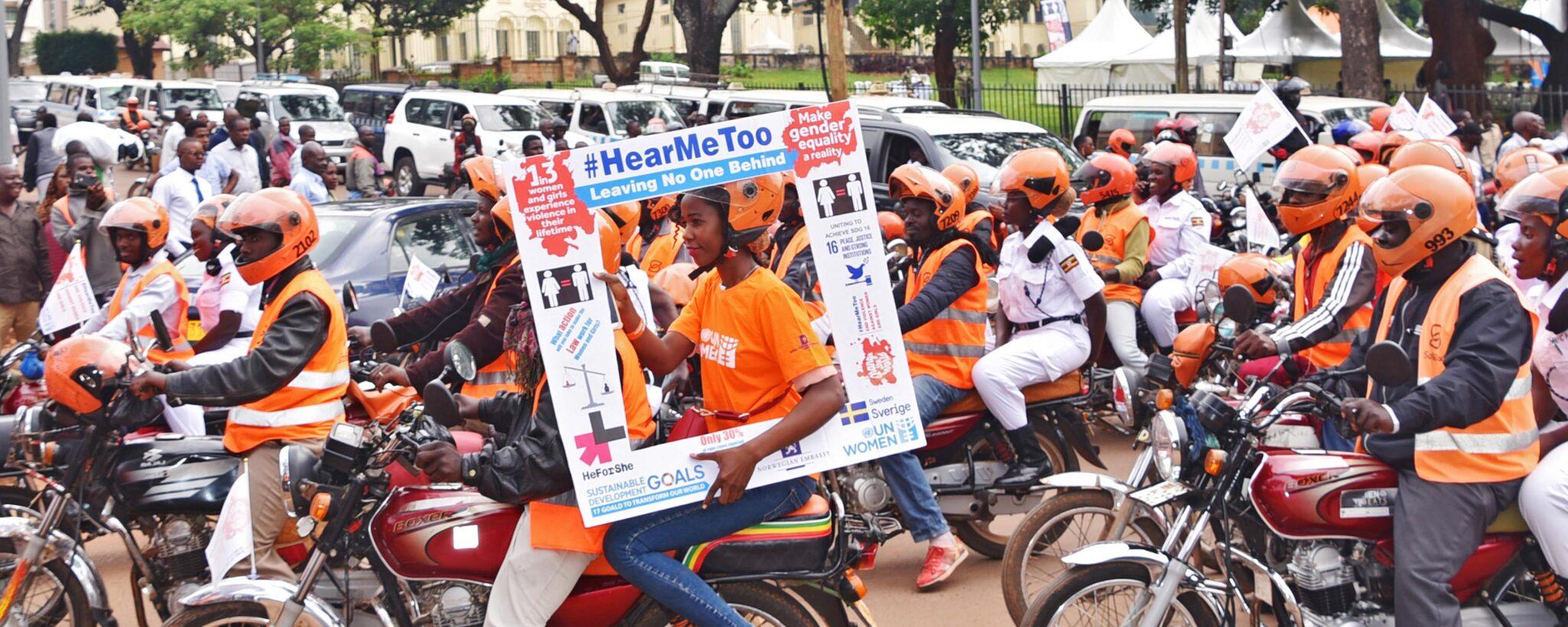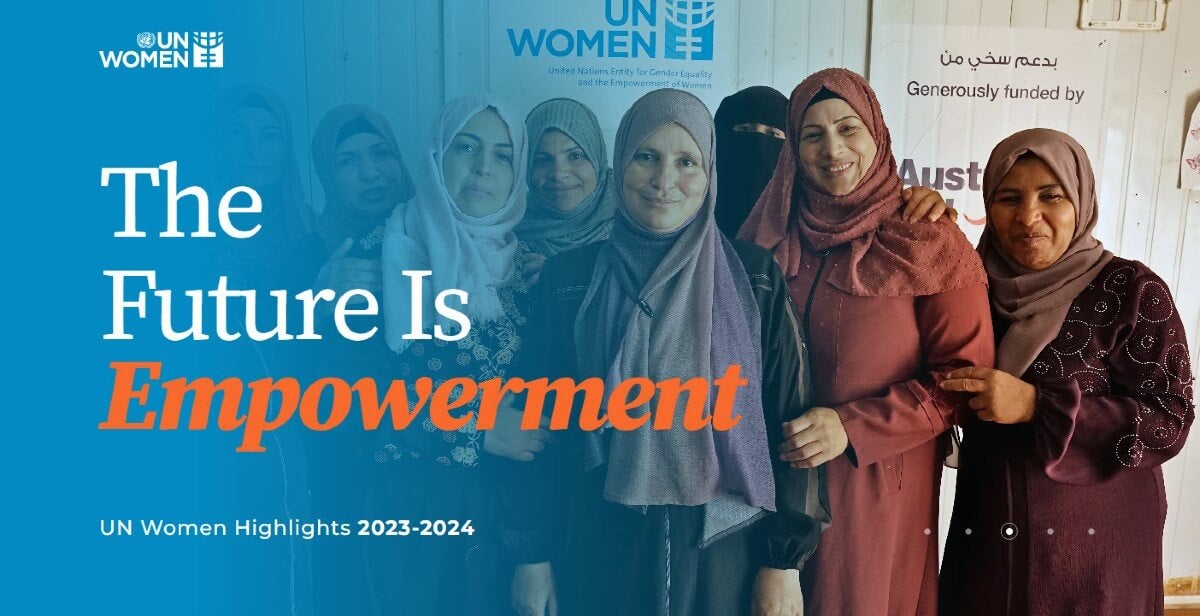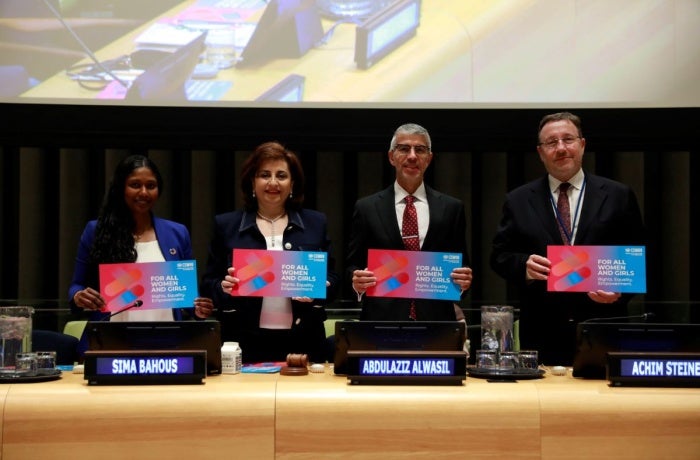Op-ed: Gender data can reinvigorate the SDGs
Progress on the SDGs is stagnating. Action on gender data may provide a path to rescuing them.

In his February 2023 remarks to the General Assembly during the Consultation on the Summit of the Future, UN Secretary-General António Guterres urged Member States to commit to rescuing the Sustainable Development Goals (SDGs).
Why do the SDGs need rescuing?
The answer is partly due to a series of intersecting crises, including climate change, COVID-19, natural disasters such as the catastrophic earthquake in Turkey and Syria, and humanitarian crises and conflicts in many parts of the world such as Afghanistan, Ethiopia, Myanmar, Ukraine, and Yemen, to name a few. One thing they have in common is that these crises invariably lead to devastating setbacks for women and girls, particularly those who are most vulnerable. Add the pervasive and growing gender backlash, and we have a perfect storm that seriously threatens gender equality and women’s rights. The Gender Snapshot 2022 report on SDG progress shows indeed a bleak picture, with more than 25% of the SDGs’ gender indicators “far or very far” from 2030 targets. Alarmingly, the report notes that at the current rate of progress, it could take nearly 300 years to reach gender equality. This is in line with other findings: the 2022 SDG Gender Index by Equal Measures 2030 found little progress on global gender equality between 2015 and 2020—and that was before setbacks due to COVID-19 and recent crises.
All of this is occurring against a backdrop of rapid technological change—the focus of this year’s 67th Commission on the Status of Women, the annual convening of Member States, UN entities, and civil society, to assess progress on gender equality and the Beijing Declaration and Platform for Action. Here too the Secretary-General’s report strikes a cautionary tone, citing the complexities of the gendered digital divide and calling for the need for an intersectional lens to address a range of issues from increasing access, digital literacy, and accelerating women’s digital financial inclusion, to data privacy and ownership, and addressing technology-facilitated violence against women.
But the answer to the question of the rollback of progress on the SDGs is also in part due to data—and specifically gaps in the availability, accessibility, and use of gender data to measure progress on commitments and drive effective policy change.
The power of gender data to bring about change is often overlooked and underleveraged. However, it is an essential lever for change. Through its global programme Women Count, UN Women’s data collection and analysis has led to timely policies and programs, including to address violence against women in Colombia, Georgia, and Uganda, women’s unpaid care and domestic work such as in Kenya and Bangladesh, and the impacts of COVID-19 in over 12 countries.
Further, as countries grapple with ways to boost their economies, we know that women’s financial inclusion is an important indicator of economic well-being. While important progress has been made, diagnostic reports undertaken by the Women’s Financial Inclusion Data partnership in six countries—Bangladesh, Honduras, Kenya, Nigeria, Pakistan, and Turkey—show that there is a dearth of data on women-owned micro, small, and medium enterprises and that most countries are still not sufficiently using available gender data to design financial products and services tailored to their needs. If gender data were leveraged to help address this inequity, the annual revenue opportunity of reaching unbanked or underserved women in these countries ranges from USD 352 million (in Kenya) to almost a billion USD (in Bangladesh).
Gender data: supporting an inclusive global development agenda
It is clear then that in a complex global climate and in the context of the SDG mandate to leave no one behind, gender data plays a critical role. In a time of overlapping crises, gender data allows decision-makers to not only identify the most marginalized but to understand how they are affected in order to craft effective policy responses and measure policy efficacy. This is the cornerstone of a truly inclusive and evidence-based global development agenda. To accelerate progress on the SDGs and gender equality, the SDG midpoint therefore provides a window of opportunity to leverage gender data to move from insight to action to measuring results and to accountability.
Barriers to progress: deficit in data frequency and capacity, and political will
The problem is that we do not have enough of this key resource. Despite the overwhelming potential of gender data to reinvigorate the SDGs, significant barriers remain to making that a reality. Currently, only 42% of the data needed to monitor the gender equality dimensions of the SDGs is available, up from 26% in 2016. At this rate, it will take 22 years for countries to make all SDG gender data available, more than a decade past the 2030 deadline for the SDGs. Moreover, more than three-quarters of data on the gender-specific SDG indicators are over a decade old and less than 20% were collected more than once, which is essential to gauge progress.
Chief among the challenges for increasing gender data availaibiliy and use is chronic underinvestment in core gender data systems. Data2X and Open Data Watch estimate that, worldwide, USD 500 million is needed from donors annually from now to 2030 to adequately fund core gender data systems and close data gaps. The PARIS21 Partner Report on Support to Statistics 2022 shows that even though global support for gender equality rose between 2011 and 2020, support for gender data—and gender data financing—dropped by 55% in 2020 compared to the previous three years—three times the drop in funding to overall data and statistics.
A circular problem: disconnect between data producers and users
The use of gender data in policy is also challenged by the disconnection between data producers and users along the data value chain due to the need to strengthen capacities of both political and technical actors to analyze, interpret, and communicate gender data. Stakeholders often also need assistance in both mapping and articulating gender data needs. These broken links from gender data collection to use in a time of increasing global complexity are risks to progress. Fortuitously, bridging these divides strengthens gender data systems, increases the use and value of gender data in policy, and drives monitoring, evaluation, and learning—to increase accountability and political will for gender data, gender equality, and progress on the SDGs.
Additionally, connecting stakeholders provides an opportunity to evolve gender equality interventions to be more intersectional. This includes deliberately examining questions of inclusion, power, and representation, so that they are fit for purpose to the current global realities and our evolving understanding of gender and the social and cultural factors that shape it.
From rescue to reinvigoration
A complex global environment of overlapping crises and rapid technological innovation threatens gender equality and progress on the SDGs. The time to act is now. The SDG midpoint and the Summit of the Future are key moments when the eyes of the world will be fixated on the commitments and actions of world leaders. Given the criticality of gender equality and gender data to spearhead progress, both should take center stage. Filling the global financing gap for gender data, strengthening technical support for national statistical actors and policymakers, and increasing political will for its use in policy by connecting stakeholders along the data value chain should form the bedrock of the reinvigoration plan.









